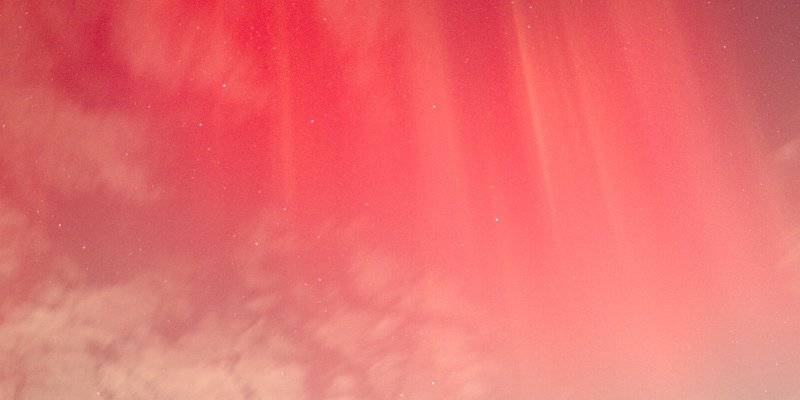I already tried this subject last year, in a much wider field of view. This time I tried with my new StellaLyra 200mm, which combined with the ASI183MM camera offers a much higher resolution.
Processed in HOO palette blended with SII data, using pseudo luminance.
Shot in several session between April and August 2025.
Elephant Trunk nebula (IC 1396A)
This time I tried with my new StellaLyra 200mm, which combined with the ASI183MM camera offers a much higher resolution.
Processed in HOO palette blended with SII data, using pseudo luminance.
Shot in several session between April and August 2025.
Difficult object to capture "properly" in narrowband only, as it's both an emission and reflection nebula, and the OIII data is almost non existant.
I managed to get enough OIII data to somewhat highlight the areas that would be part of the reflection nebula (and even then, the OIII data is stretched to the limit).
Shot between the 3rd and the 9th of January 2025.
Palette: HSS, with OIII added in a second stage with a blue-ish tint.
IC 405 - Flaming Star
I managed to get enough OIII data to somewhat highlight the areas that would be part of the reflection nebula (and even then, the OIII data is stretched to the limit).
Shot between th...
Jupiter close to its opposition, decent quality considering bad seeing and some condensation on my front lens.
Jupiter, 2024-12-20
Since the weather is still not cooperating, I had another shot at reprocessing my IC 1395 image.
This new 2024 version, aside from using new modern tools such as BlurXterminator and NoiseXterminator, makes use of a different technique illustrated by Adam Block. The image was first rendered with an HOO palette, then SII data was added back with a yellow tint.
I really like this new output, the colours are quite rich and well balanced, especially compared to the older HOO and SHO versions.
IC 1396 - Elephant Trunk Nebula
Shot over three nights in August, September and October, with almost 19 hours of acquisition.
First light for both my new ASI2600MM and Chroma narrowband filters.
This new 2024 version, aside from using new modern tool...
Yet another image found in my archives.
Rosette nebula in both HOO and SHO, Feb 2022.
Rosette nebula (SHO Version)
Rosette nebula (SHO Version)
While backing up some data I found a few images in my archive that needed processing. Not the best shots, but I managed to get something out of it. This is from Dec 2022, 7 hours total exposure in narrowband (SHO + a colourised HSO to emulate natural colours).
Horsehead Nebula
This is from Dec 2022, 7 hours total exposure in narrowband (SHO + a colourised HSO to emulate natural colours).
Horsehead Nebula
A first glimpse of comet C/2023 A3 (Tsuchinshan–ATLAS) from Box Hill.
Not terrible, considering I forgot my tripod home 🤦
Comet C/2023 A3 Tsuchinshan–ATLAS from Box Hill
Not terrible, considering I forgot my tripod home 🤦
Stacked 4 shots of 1/10th of seconds each, handheld
Stacked 4 shots of 1/10th of seconds each, handheld
After missing it the first time, the Aurora came back, visible even here in southern England.
I managed to grab an almost night long timelapse, with a few selected highlights.
Aurora Borealis in Surrey
I used the "revisions" mechanism to upload 3 different frames, but please check out the full timelapse as well.
Aurora Borealis in Surrey
Planetary season is starting again, and I got a new ASI678MC for the occasion.
Bit of a rushed shot, but quite happy about the results, given the planet wasn't too high yet, and seeing was terrible (as usual)
I also did a bit of Saturn during the same night, but it wasn't worth publishing.
Jupiter, first of 2024
Bit of a rushed shot, but quite happy about the results, given the planet wasn't too high yet, and seeing was terrible (as usual)
| Telescope | Celestron C11 XLT |
| Camera | ZWO ASI678MC |
| Mount | iOptron CEM40 |
| Software | FireCapture, AutoStakkert, Siril, PixInsight |
The Sun in H-Alpha
Sun Ha, 2022-11-18
| Telescope | TS Optics Photoline 60mm F/5.5 |
| Camera | ZWO ASI1600MM |
| Mount | SkyWatcher Star Adventurer |
| Filters | Daystar Quark Chromosphere |
| Software | FireCapture, AutoStakkert, PixInsight |
